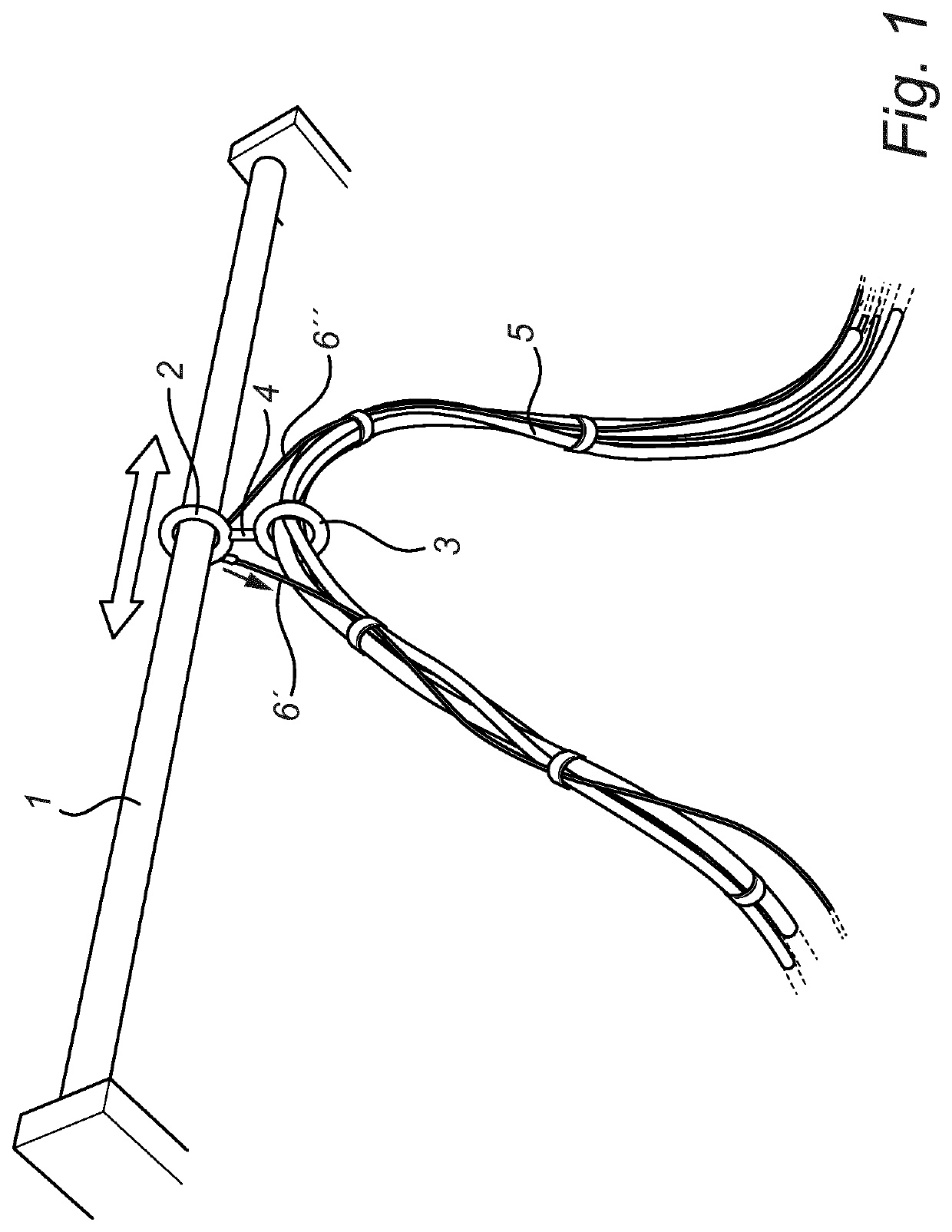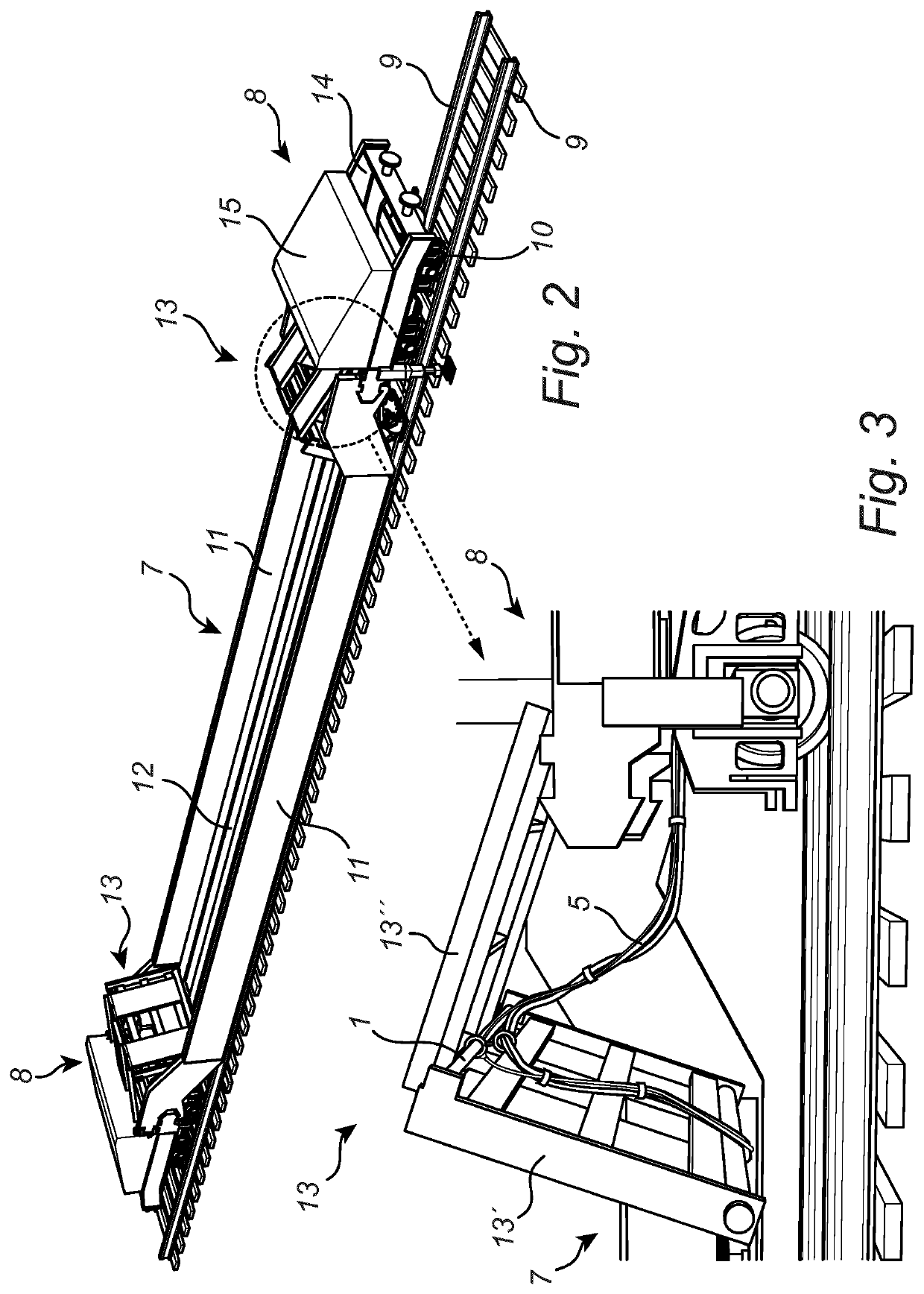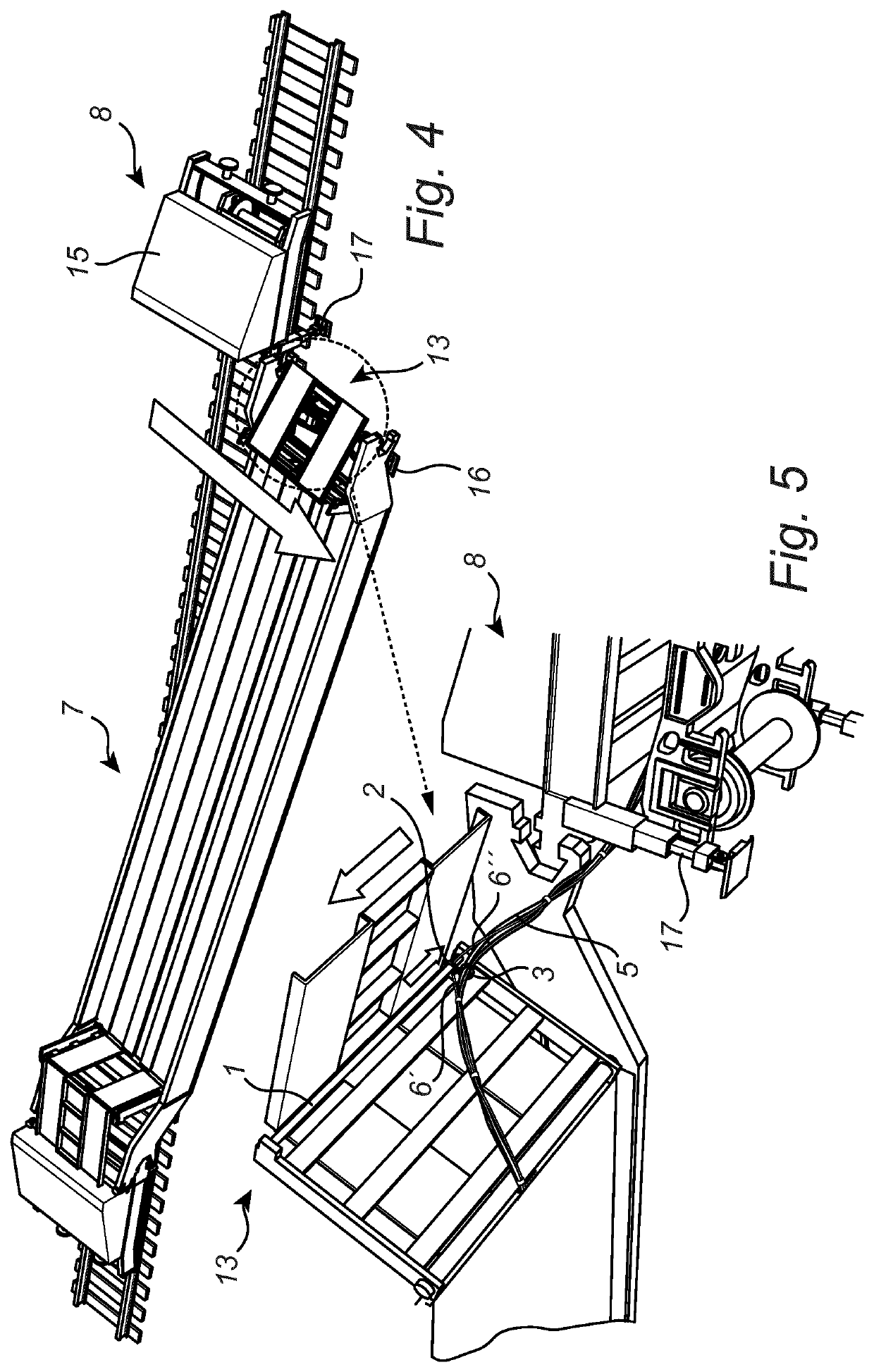Suspension device for cables and tubings
a suspension device and cable technology, applied in the direction of railway components, pipe supports, wagons/vans, etc., can solve the problems of cable carriers being quite expensive to purchase and install, not being able to choose to disconnect, and the solution suffering from some serious disadvantages, so as to reduce the risk of cables and tubings being damaged
- Summary
- Abstract
- Description
- Claims
- Application Information
AI Technical Summary
Benefits of technology
Problems solved by technology
Method used
Image
Examples
Embodiment Construction
[0018]Reference is first made to FIG. 1 in which an embodiment of the inventive suspension device is illustrated in a perspective view from below. The suspension device comprises a guide arrangement in form of a rod 1 having a circular cross section, a slider 2 in the shape of a circular ring, which is slidably arranged on the guide rod 1, and a holder 3, also in the shape of a circular ring, which is rotatably connected to the slider 2 by means of a bolt 4 or the like. A bundle 5 of cables and tubings passes through the holder 3 such that they can move in their longitudinal direction through the holder. In order to protect the cables and tubings from tractive forces two traction wires are arranged and more precisely a first traction wire 6′, which is connected to the slider 2 in one end and a load carrier 7 (not shown in FIG. 1) in the other end, as well as a second traction wire 6″, which is connected to the slider 2 in its one end and a bogie 8 (not shown in FIG. 1) in the other ...
PUM
 Login to View More
Login to View More Abstract
Description
Claims
Application Information
 Login to View More
Login to View More - R&D
- Intellectual Property
- Life Sciences
- Materials
- Tech Scout
- Unparalleled Data Quality
- Higher Quality Content
- 60% Fewer Hallucinations
Browse by: Latest US Patents, China's latest patents, Technical Efficacy Thesaurus, Application Domain, Technology Topic, Popular Technical Reports.
© 2025 PatSnap. All rights reserved.Legal|Privacy policy|Modern Slavery Act Transparency Statement|Sitemap|About US| Contact US: help@patsnap.com



